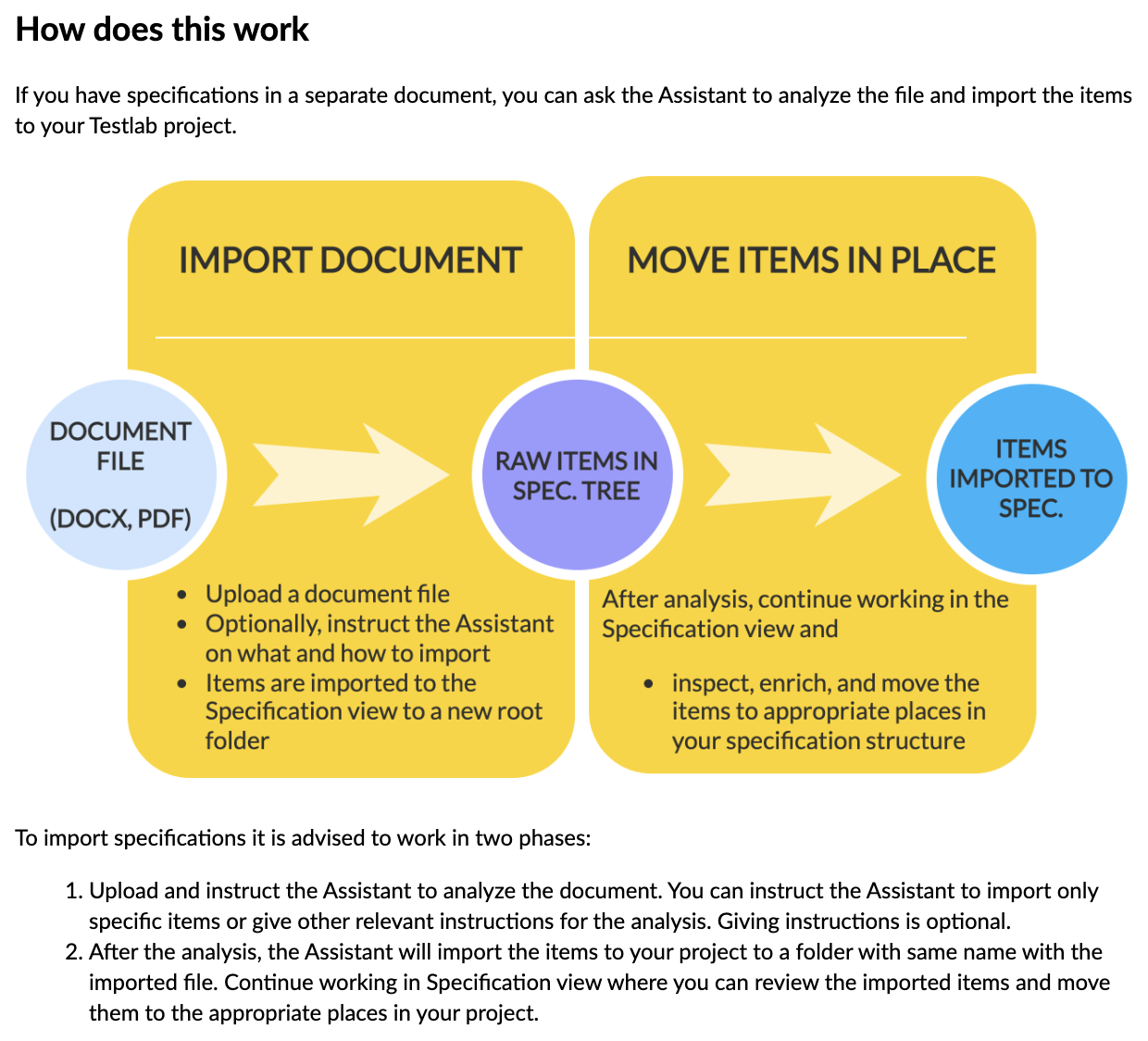Meliora Testlab – El Fausto – makes it easier to transition your (already written) specs to Testlab to work on. Please read on for more details about this and many other improvements.
AI: Import specifications from document [incubation feature]

The AI assistant has a new feature for importing specifications from document sources to your project. It can transcribe your Word (.docx) or PDF (.pdf) -formatted documents, identify specification items in them, and import them as specification items to your project’s tree of requirements.
The process is not just a simple conversion but a process where the whole document is analyzed and converted to a tree structure in your project. By design, the import process does not touch the existing specification in your project but imports the newly identified specification items to a new root folder (named after the imported document). From this folder, you should inspect the imported content, refine it if necessary, and move it into place in your current specification tree.
As importing will not touch your existing specification items, we encourage you to give it a go if you wish to import more things to work on to your Testlab project.
Other changes
When testing Tasks, the details of the task are shown in the test execution view
When you use the “Test this” -feature to test tasks via the Task board, the execution view now shows the details of the task under testing (all tasks with links to the current test case under testing are shown so you can use this feature flexibly).
Hiding not-needed user roles
The “Roles and permissions” -panel has a new option to hide (maybe deprecated or otherwise not-needed) user roles. When a role is hidden, it is only shown in relevant management panels if some user still has it assigned. Note: This means that the hiding only hides the role from UI but if it still is assigned to someone, the permissions are granted.
Remove and edit permissions are automatically granted to the asset’s owner
The permission model has separate .edit and .delete permissions that apply for test categories, test cases, issues, and requirements. From El Fausto forward, users can always delete assets they have added, even when they don’t have the relevant permissions. Similarly, they can edit assets they have added even without permissions, except for requirements and test cases that have been marked as ready (and so require .edit.ready – permission). This is a sensible default that makes managing workflows easier and at the same time makes it possible to protect content by enforcing ready-state-based workflow.
The List of issues report may include fields from a test case
An issue may have links to test cases – most often the test cases the issue has been found with. The list of issues report has been added with support for reporting details of these linked test cases.
Performance improvements
Various performance improvements have been gained due to changes in system architecture.
Thanks for all your feedback,
Meliora team

The Fausto, a sturdy fishing boat from La Palma, set sail in 1968 with a seasoned crew and an unexpected passenger, Julio García, a desperate father trying to reach his ailing child. Hours later, the ship vanished, sparking a massive search. Days passed before a British vessel found them adrift, dehydrated but alive. Strangely, they declined rescue, requesting fuel instead. They resumed their journey but never reached home. Months later, the Fausto reappeared, adrift in the Atlantic, with a single mummified body and cryptic notes hinting at despair and mystery. Before answers emerged, the boat sank, sealing its secrets in the deep. “El Fausto” endures as a haunting enigma of the sea.
(Source: Reddit, Medium, Map by Oona Räisänen, Public Domain, via Wikimedia Commons)

